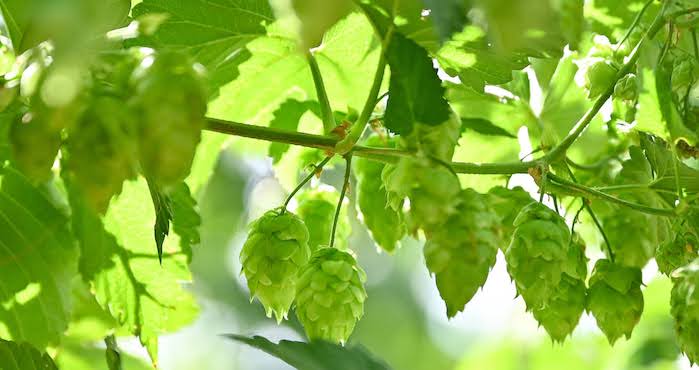Hop Science Newsletter (August 2017)
In this issue: We focus on a compound that receives a lot of attention both scientifically, and by brewers: 4MMP.

IS THIS CATTY IN MY BEER… OR BLACK CURRANT?
This issue of the Newsletter is dedicated to a very specific compound that receives a lot of attention both scientifically, and by brewers: 4MMP (4-mercapto-4-methyl-2-pentanone). Depending on concentration and matrix, 4MMP can exhibit different flavours but is typically described as ribes, black currant, box tree, muscat grape, fuel and catty (cat urine). Black currant was the flavour described by Steinhaus when it was found as one of the most odor active volatiles in Cascade hops in 2006. In this work and the work of Kishimoto it became clear that this compound is present in much higher concentrations in U.S. bred varieties than European varieties. 4MMP is probably a factor in the complicated start of Cascade. Originally desired by big U.S. breweries as an aroma hop to replace European varieties, its “strange” flavour was not at first well appreciated – but that view has certainly changed!
Threshold values published for 4MMP are between 0.0015 and 1.5 ppb. Noticeable concentrations are
reported by Steinhaus with 0.0017 ppb and reported transfer rates from hops into beer are reported with about 60% in a late-hopped beer. Gros et al reported on 4MMP in 2012, but using the different name of 4-sulfanyl-4-methylpentan-2-one (4S4MP). Beers latehopped with Tomahawk and Nelson Sauvin (from New Zealand) had concentrations of 0.023 ppb 0.127ppb respectively, much higher than in previous brewing trials. Also mentioned was 4MMP’s presence as S-cystein conjugates in hops. The same team showed that 0.2 ppb of 4 MMP can be reached by bottle refermentation.
It is also clear that some fruity thiols such as 3MH and 3MHA (described as rhubarb and grapefruit) are also present in malt, often in conjugated forms. Though the concentration of free 4MMP and its precursors is higher in U.S. hop varieties like Citra, Cascade, Chinook, as well as some New Zealand and Australian varieties, the precursor form of 4MMP was also found to be present in Saaz, Strisselspalt and Mandarina Bavaria!
It has been shown that 4MMP degrades during beer storage. These fruity thiols are know to vanish rather quickly and it will be important to understand the exact mechanism behind this degradation behaviour. Another compound delivering a grapefruit like flavour is 3-mercapto-4-methylpentan-1-ol (3M4MP). Here the amount of the precursors are also much higher than the free form. So to get more of these fruity thiols, brewers might utilize yeasts that have the right enzymes to release these compounds, keeping in mind that the compounds’ flavours may change (from pleasant fruity to unpleasant catty/fuel/burnt rubber) at certain concentrations…beer drinkers have very individual perceptions!
Though the term “catty” is used by many U.S. brewers and beer drinkers in a positive way…it is unappealing for Europeans, who are hesitant to use it and prefer an alternative such as black currant. I admit that catty is a well established descriptor for many, but in establishing a universal language of hops, perhaps we should look for term that is equally understood and can be interpreted positively by everyone.
